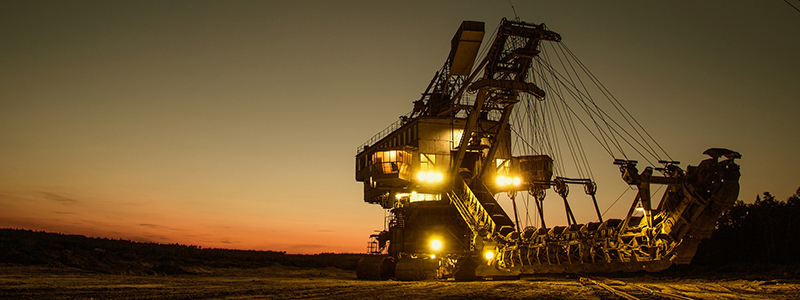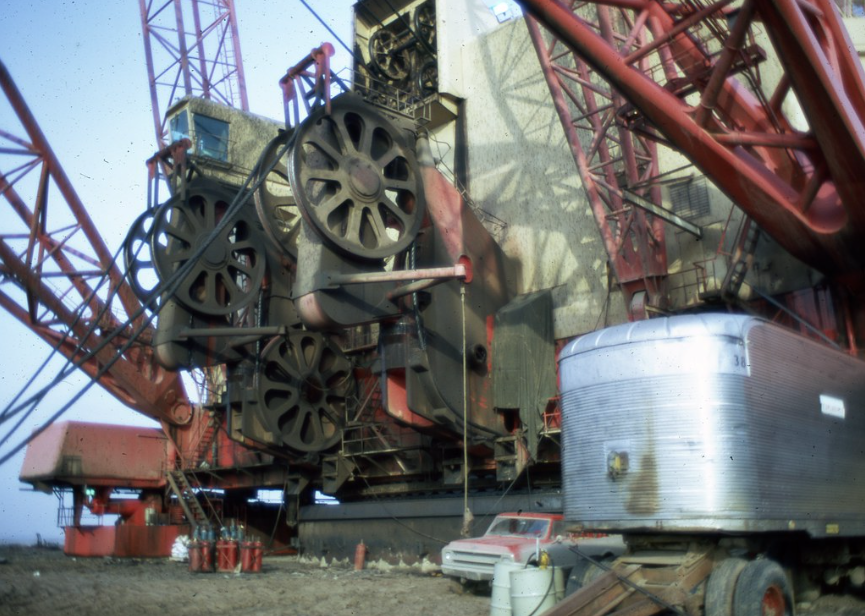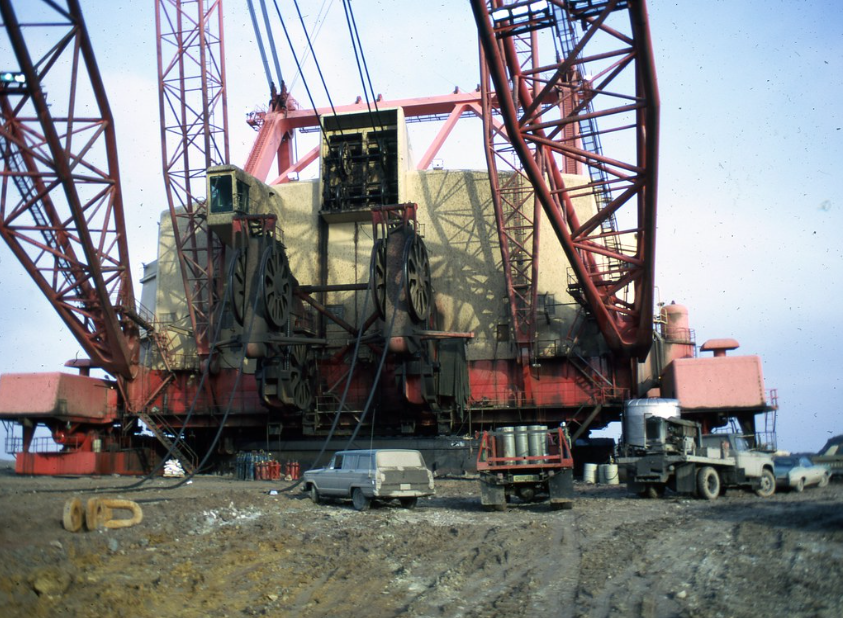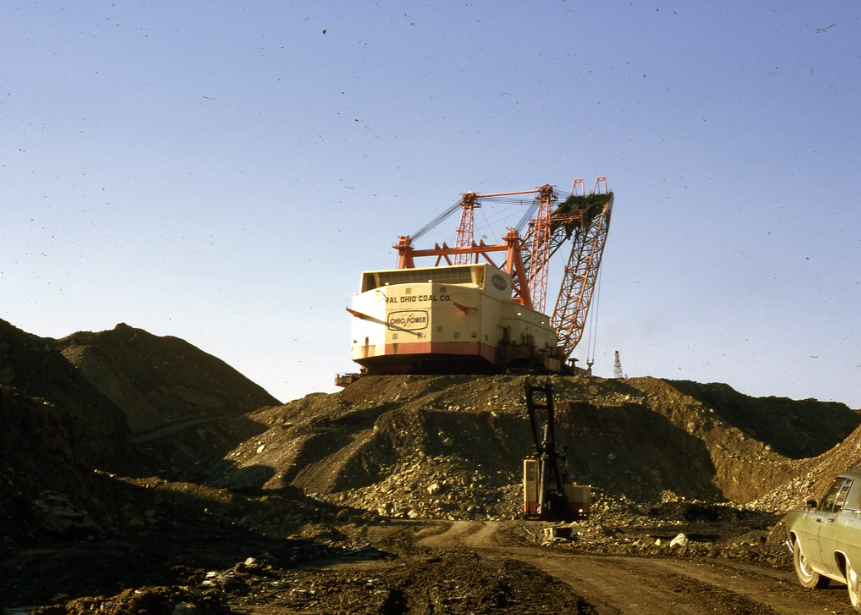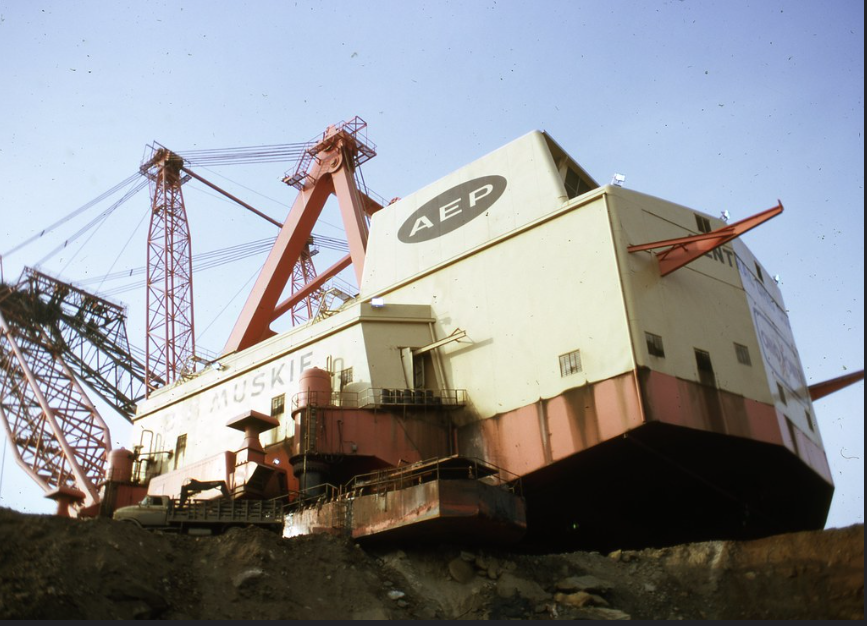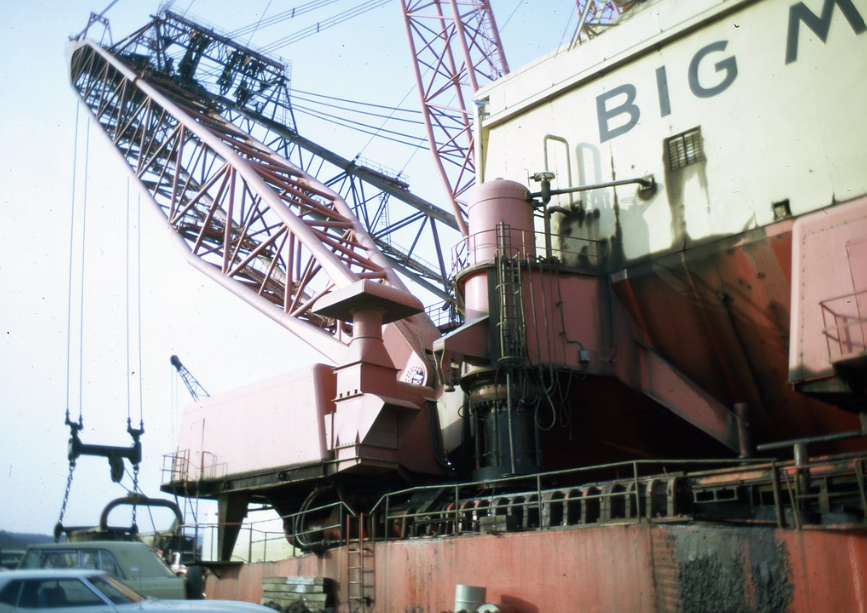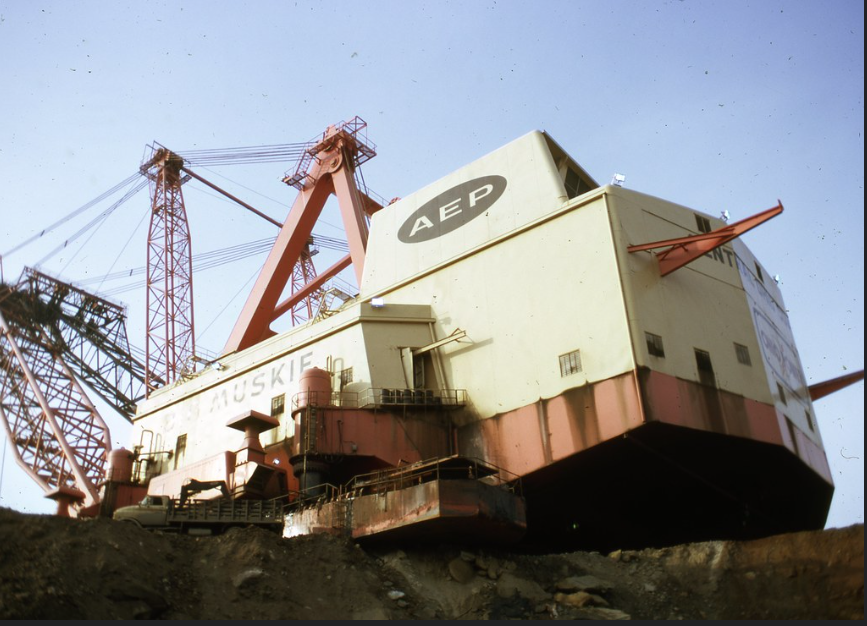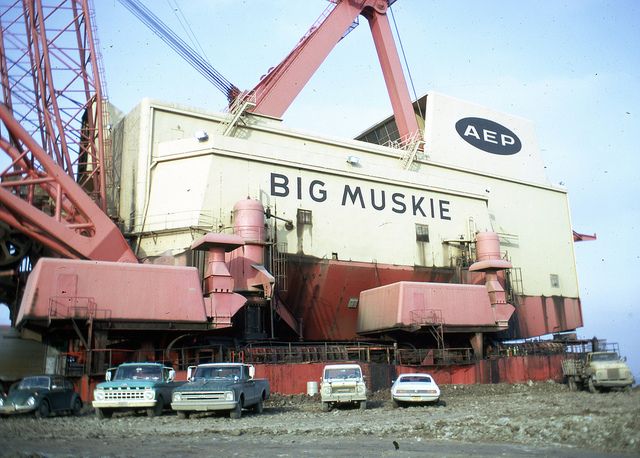Mining operations have a rich and complex history, marked by the construction of colossal machines that pushed the boundaries of engineering. Among them, the Big Muskie, a legendary dragline bucket excavator, still holds the record as the world’s largest dragline, even though it has been out of service for nearly 30 years.
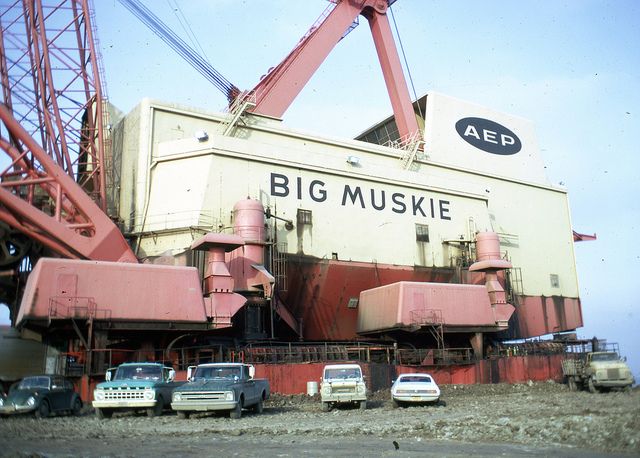
Pictured by Leonard Lucas and posted by Bill Greene
What is a Dragline?
A dragline refers to a massive bucket excavator controlled by a system of pulleys, chains, and ropes that enable the movement and operation of its giant bucket. These machines are designed to move vast amounts of dirt, rock, and overburden.
The setup consists of a large bucket suspended from a boom, with two main cable systems powered by robust motors:
- Hoisting Rope: Raises the bucket from the boom.
- Drag Cable: Moves the bucket horizontally across the worksite.
Though the largest dragline in history is no longer operational, these machines continue to inspire awe and hold a special place in the memories of machinery enthusiasts.
Big Muskie: A Machine of Legends
Nicknamed Muskie or Ol’ Musky, the Big Muskie was a Model 4250-W Bucyrus-Erie dragline and the only one of its kind ever built. Constructed between 1967 and 1969, the machine cost $25 million at the time—equivalent to $171 million today.
Big Muskie was an engineering marvel, rivaling the world’s largest bucket excavators like the Bagger 288 in size and capability.
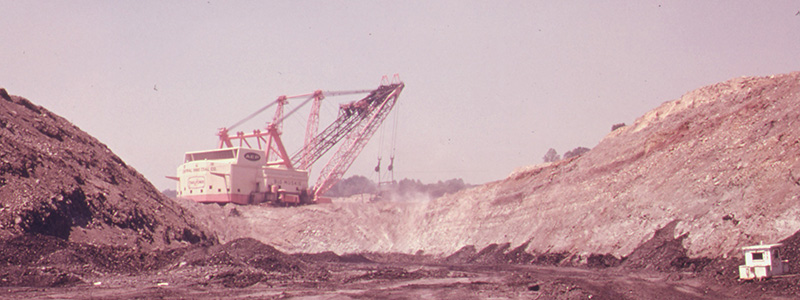
The Legacy of Giant Draglines: From Big Muskie to Modern Mining
Mining operations have a rich and complex history, marked by the construction of colossal machines that pushed the boundaries of engineering. Among them, the Big Muskie, a legendary dragline bucket excavator, still holds the record as the world’s largest dragline, even though it has been out of service for nearly 30 years.
What is a Dragline?
A dragline refers to a massive bucket excavator controlled by a system of pulleys, chains, and ropes that enable the movement and operation of its giant bucket. These machines are designed to move vast amounts of dirt, rock, and overburden.
The setup consists of a large bucket suspended from a boom, with two main cable systems powered by robust motors:
- Hoisting Rope: Raises the bucket from the boom.
- Drag Cable: Moves the bucket horizontally across the worksite.
Though the largest dragline in history is no longer operational, these machines continue to inspire awe and hold a special place in the memories of machinery enthusiasts.
Big Muskie: A Machine of Legends
Nicknamed Muskie or Ol’ Musky, the Big Muskie was a Model 4250-W Bucyrus-Erie dragline and the only one of its kind ever built. Constructed between 1967 and 1969, the machine cost $25 million at the time—equivalent to $171 million today.
Big Muskie was an engineering marvel, rivaling the world’s largest bucket excavators like the Bagger 288 in size and capability.
How Big Was Big Muskie?
- Bucket Size: Big Muskie’s bucket was enormous, capable of holding two Greyhound buses side by side.
- Power Consumption: Operating the machine required so much electricity that it could power 27,500 homes at once. Power costs were so high that operations were often conducted at night when electricity was cheaper.
- Mobility: Though mobile, Big Muskie could only move short distances, at a pace of 0.1 mph, using hydraulic walker feet.

The Downfall of Big Muskie
Big Muskie operated for 22 years, but rising costs and changing regulations sealed its fate:
- Electricity Costs: Skyrocketing power costs made the machine increasingly expensive to run.
- Environmental Regulations: The 1977 Clean Air Act reduced coal demand, while community opposition to strip mining grew.
- Technological Advancements: German innovations, such as the Bagger 263 and Bagger 288, introduced more efficient bucket-wheel excavators, making draglines like Big Muskie obsolete.
In 1991, Big Muskie was retired. By 1999, it was dismantled and sold for scrap under new EPA regulations requiring the removal of mining equipment from abandoned sites.
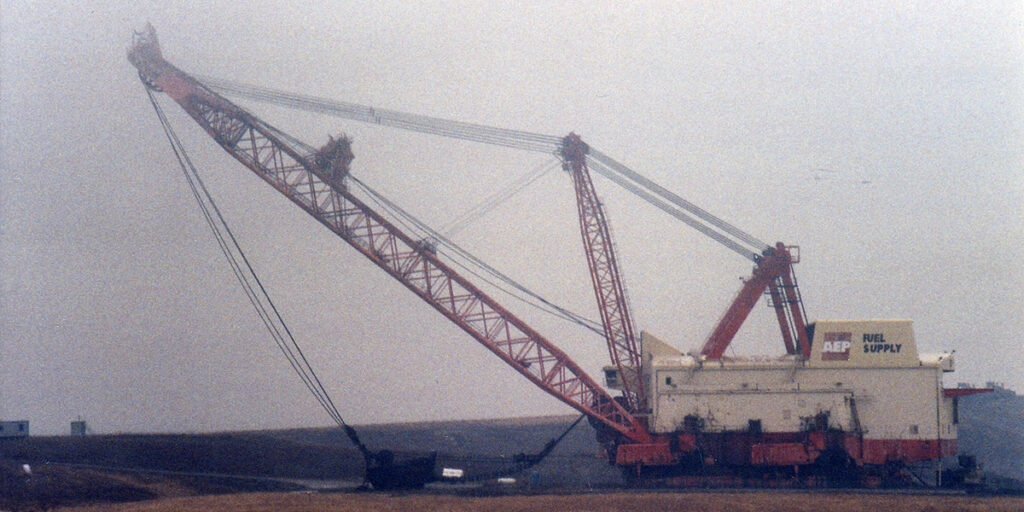
Big Muskie’s Legacy
Despite its dismantling, Big Muskie’s bucket lives on as a memorial at Miners’ Memorial Park in Ohio. The park honors the region’s coal mining history, with the massive bucket serving as a centerpiece and an educational exhibit.
Nearby, a reclaimed strip mine known as The Wilds now thrives as a wildlife park, home to diverse flora and fauna—a testament to the efforts to restore mining lands.
